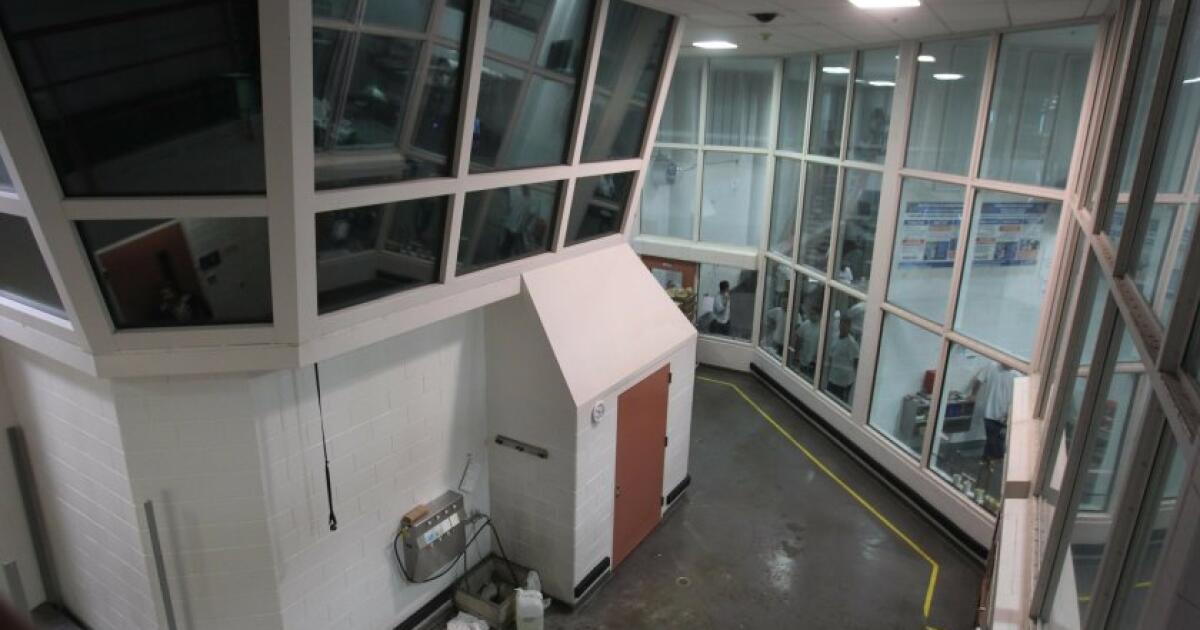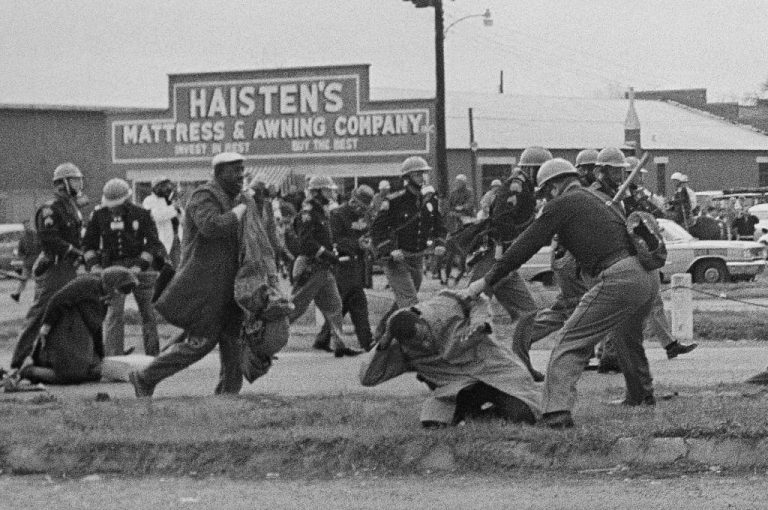
Minutes before Jerrell Dwayne Lacy was found unconscious in his Central Jail cell last year, an unidentified nurse was alarmed by the results of his electrocardiogram.
The nurse was about to call 911 so Lacy could be moved to a hospital emergency room. But someone told San Diego sheriff’s deputies that Lacy was instead cleared to return to the jail’s housing module.
The deputies needed a wheelchair to move Lacy back to his cell, where 12 minutes later he was found unresponsive — and soon died.
“According to an interview with jail medical staff, a nurse was in the process of alerting medical staff of a need for an emergency room transport due to the EKG disparities when Lacy went man down,” says a new report from the Citizens’ Law Enforcement Review Board, or CLERB.
The lengthy report by investigators with the civilian oversight board raises questions about the circumstances surrounding the death of Lacy, one of 20 people to die in San Diego County jails last year.
The findings also help illustrate the challenges the sheriff’s department, medical staff and outside investigators confront in protecting men and women behind bars.
Among other problems, the Lacy investigation found contradictory witness testimony, reports of malfunctioning jail equipment and gaps in jurisdiction over what the review board is permitted to investigate.
The volunteer oversight board is scheduled to consider the findings at its monthly meeting Tuesday night. The sheriff’s department did not immediately respond to questions about how deputies and jail medical staff responded to Lacy’s condition.
The Citizens’ Law Enforcement Review Board does not have jurisdiction over jails’ doctors, nurses and contract healthcare providers, although Executive Officer Paul Parker has proposed adding those duties to the panel’s responsibilities.
Investigators did not assign any specific fault to deputies who responded to Lacy, a 38-year-old man with a history of mental illness who had previously been placed under conservatorship.
Neither the mental-health diagnoses nor the naming of a court-appointed conservator worked to save Lacy.
Nine days before he died, “Lacy was involved in a use of force incident which involved fist strikes to Lacy’s face and abdomen, knee strikes to Lacy’s right leg and left bicep/tricep area,” the investigation found.
Deputies also used an electric shock device to contain Lacy, whose injuries required transport to Tri-City Medical Center.
Lacy described what happened in a letter he sent to his mother four days before he died.
“The deputy burst my head and I was sent outside to the hospital,” Lacy wrote.
He told his mother that his glasses were lost in the altercation and had not been replaced. He asked his mom to help him get a new pair — and to contact his attorney to let her know what had happened.
A sheriff’s spokesperson told The San Diego Union-Tribune last year that Lacy had a history of violent behavior and had attacked a deputy days earlier.
After Lacy was returned to custody, he told the jail medical staff that he planned on hurting himself, the review board investigation said. He was placed in enhanced observational housing, or EOH, the jail unit that calls for checks every 15 minutes to prevent suicides.
Lacy was cleared from EOH and moved into general housing after a mental-health assessment determined he was not a threat to himself or others.
Just over a week later, on the morning of the day he died, Lacy “denied any signs and symptoms of COVID during a group health check,” investigators said. But a little more than an hour after that, sheriff’s records show Lacy was escorted back to the jail medical unit.
“In an interview with homicide detectives, Deputy 1 stated, ‘the entire module in (housing unit D) was yelling man down’,” investigators wrote. “Deputies entered and escorted Lacy to third floor clinics. Jail video surveillance showed when Lacy exited his cell, he fell to the ground.”
The CLERB report said one incarcerated man told investigators that 30 minutes passed between the time Lacy collapsed and deputies arrived to help. Another man said the delay was more like 45 minutes; a third person said the call box in his cell was not functioning.
The sheriff’s department was unable to provide video of events prior to 11:06 a.m. on the day Lacy died, the review board report said.
“CLERB was unable to verify the length of time from when (incarcerated persons) notified deputies of a medical emergency to the time deputies arrived (for Lacy’s first discovery),” the review board concluded.
As a result, “there was insufficient evidence to either prove or disprove the allegation.”
In all, five out of nine allegations of potential misconduct in the review board’s Lacy case were not sustained, meaning there was not enough information or evidence to prove or disprove misconduct on the part of sheriff’s deputies.
Three claims were summarily dismissed because they were outside the scope of the board, whose oversight is limited to sheriff’s deputies and specifically excludes potential errors or misconduct by the jail medical staff.
One allegation was ruled unfounded, a claim from the Lacy family attorney that the 38-year-old San Diego man should have been housed in a cell calling for stricter monitoring.
The autopsy showed Lacy died from a blood clot in his lungs. He had complained of chest pains and shortness of breath in the hours before he died.
In announcing the death, the sheriff’s department said Lacy went into “medical distress” while waiting for an ambulance.
He was the seventh of 20 people to die in San Diego County jails last year, including one man who died soon after being awarded a compassionate release.
The sheriff’s department has a long history of people dying behind bars. Twelve people have died in local jails so far this year.








